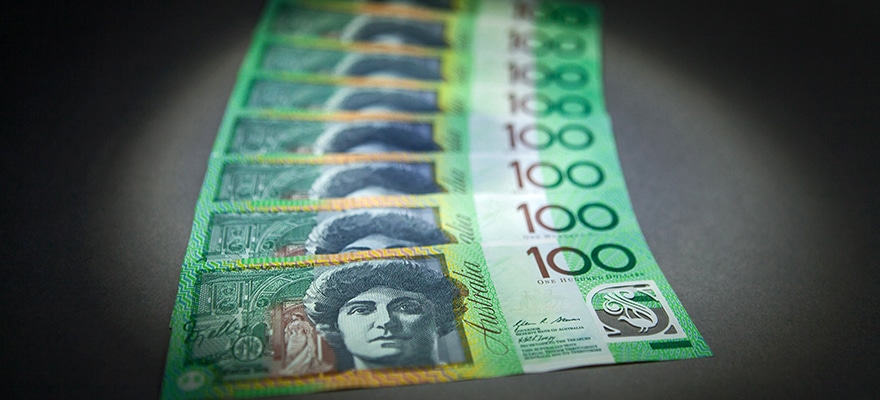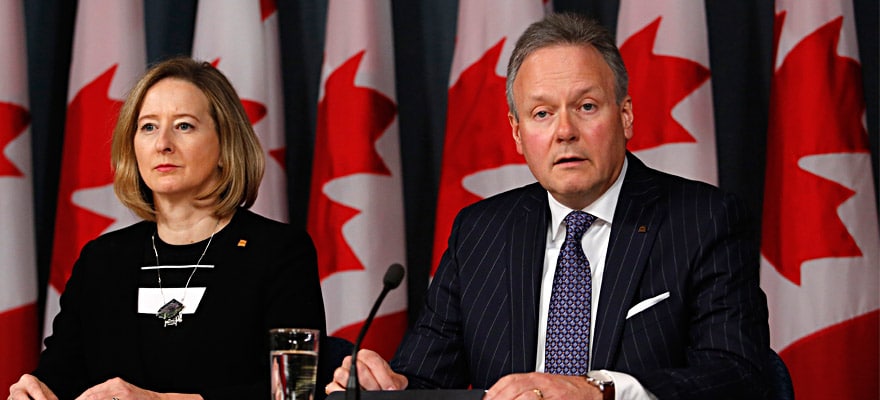Halted Declines
The Aussie dollar has seen a reprieve in recent weeks from the massive declines over the past 24 months. From April 2013 to September 2015, the AUD fell over 36 cents against the greenback.
This move is almost entirely associated with the decline in commodity prices, as the domestic economic data from Australia has remained relatively stable during 2015. The slowdown in China has caused a reduction in commodities prices and along with it, risk-off sentiment caused equities to crash during August. Both these markets - stocks and commodities - have a strong positive correlation with the AUD, and therefore the currency was pressured by the declines.
By early October the AUD/USD has rallied 200 pips from lows after making a double bottom at the end of September. Given the much weaker than expected US employment figures released on October 2, which caused Fed rate hike expectations to be pushed out into 2016, the Aussie may see a further retracement of this year's steady declines. The currency remains highly sensitive to news out of China, and any commodity and stockmarket declines.
Neutral RBA
The Reserve Bank of Australia kept rates on hold at 2% on October 6 as was expected by all economists surveyed. The accompanying rate decision statement was similar to the prior statement and thus failed to introduce any new dovish rhetoric. The RBA confirmed that they are in wait-and-see mode and this neutral stance saw the Aussie rally 50 pips upon release. Key aspects from the statement were:
- "some further softening in conditions in China"
- "Key commodity prices are much lower than a year ago, in part reflecting increased supply, including from Australia"
- "Equity market Volatility has continued, but the functioning of financial markets generally has not, to date, been impaired"
- "In Australia, the available information suggests that moderate expansion in the economy continues. While growth has been somewhat below longer-term averages for some time, it has been accompanied with somewhat stronger growth of employment and a steady rate of unemployment over the past year. Overall, the economy is likely to be operating with a degree of spare capacity for some time yet, with domestic inflationary pressures contained. Inflation is thus forecast to remain consistent with the target over the next one to two years, even with a lower Exchange rate."
- "monetary policy needs to be accommodative"
- "Further information on economic and financial conditions to be received over the period ahead will inform the Board's ongoing assessment of the outlook and hence whether the current stance of policy will most effectively foster sustainable growth and inflation"
After the release the Overnight Index Swap market was pricing a 23% probability for a rate cut at the November meeting. As conveyed in the statement and confirmed in a speech by Glenn Stevens during September, the RBA is "pretty content" with where interest rates are right now.
Domestic Data Stable
On July 22, CPI came in close to analysts' estimates; the headline figures slightly missed economists' consensus for both the q/q and y/y readings, however the Trimmed Mean - the Bank's preferred measure of inflation - slightly beat expectations from a survey of Bloomberg economists by printing at 2.2% for the y/y figure. This is down from the Q1 y/y figure of 2.3%.
Employment figures for August, released September 9, once again beat expectations gaining 17,400 vs an expected 6,000. This followed a gain of 39,200 in July which was revised up from 38,500. In comments on August 14, RBA Assistant Governor Christopher Kent signalled the worst is probably over for the nation's jobs market, suggesting a three-month pause in interest rates could be extended.
Gross domestic product for the second quarter, released on September 1, missed expectations, increasing less than expected at 0.2% on the quarter; analysts expected an increase of 0.4%. Year-over-year, GDP was up 2.0%, also below expectations. Reduced mining and construction activity, coupled with a decline in exports were the main factors in the slowdown in economic growth.
A lower currency is helping Australia to weather the storm as falling commodity prices weigh on export revenue. Demand from China, Australia's largest trading partner, is expected to continue to slow and the glut of iron ore, the country's top export, is expected to remain present as top producers ship record amounts to compensate for lower prices.
Outlook Data Dependent
Governor Stevens remained upbeat on the economy during his semi-annual testimony before the federal House of Representatives Economics Committee on September 17. Stevens did not share the same sentiment as much of the media concerning Australia's economy stating that discussions and reports have been "more negative than the facts actually warrant".
He also stated "It ain't all home and hosed and all happy days, but it is not as bad as much commentary that I read would lead one to believe". Stevens also downplayed speculation that China growth issues would trigger another rate cut, saying, "You would expect in that world the [Australian dollar] exchange rate is probably going to go down, probably quite a bit, and that will be one of the key mechanisms that helps the Australian economy cope."
Our bias for the Australian dollar remains neutral in the medium term, with a slight short-term bullish bias which is heavily contingent on equities, commodities and China, and the Fed delaying rate hikes. Negative news from China or bearish price action in metals and stocks will swiftly neutralise any bullish sentiment on the AUD. With this in mind we are expecting some short-term upside in the AUDUSD pair. Our longer term bias for the AUD will remain data dependent.

















